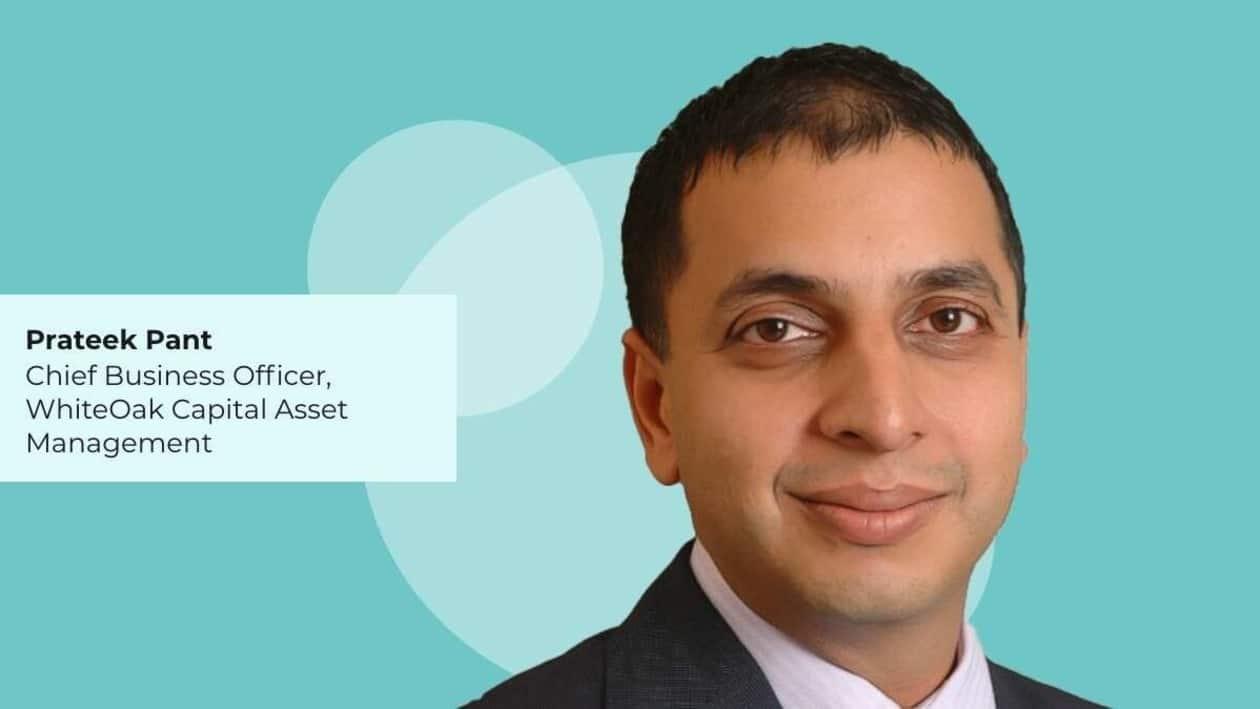According to Prateek Pant, Chief Business Officer, WhiteOak Capital Asset Management, at the present time, opportunities are increasing in private sector financials, consumer discretionary, industrials, healthcare, and speciality chemicals.
In an interview with MintGenie, he said that they typically tend to find more opportunities within small and mid caps. “India has a vast, heterogeneous SMID-cap (small and mid caps) segment which has lesser research coverage and hence provides strong alpha generation potential,” said Pant.
He spoke extensively on Foreign institutional investors (FIIs) outflows, strategy for new investors, small and mid-cap stocks, and the initial public offering (IPO) market.
Edited Excerpts:
In times of inflation and a volatile market, what should a new investor's financial strategy be?
We can answer this from an equity market perspective. Our fundamental, long-held belief has been that the direction of equity markets is impossible to predict in the short term, hardly any different than a coin flip which has a 50-50 chance of landing heads or tails. Hence, taking entry/exit calls or cash calls to time the market and avoid market corrections is a rather futile exercise. Thus, from a prudent risk management perspective, it is crucial to stay fully invested at all times with a bottom-up approach to investing in great businesses at attractive valuations.
Seasoned investors with longer time horizons have viewed volatility as an opportunity to increase exposure to risk assets. It has also been the case that over long periods, equities have generated the highest returns across all asset classes. However, at the headline level, whether an allocation is to be made to equities, debt, real estate, or gold should ideally be a function of the investor’s risk profile in consultation with her financial advisor.
Which sectors do you expect to perform better this year?
Our team is very stock selection driven. We do not make top down thematic or sectoral calls, as those are fraught with risk without adding to returns in our view. Having said that, given our philosophy, there are certain sectors where the team might find more attractive opportunities compared to other sectors from a bottom-up perspective. At the present time, the team finds a greater number of opportunities in private sector financials, consumer discretionary, industrials, healthcare, and speciality chemicals.
In February, foreign investors withdrew ₹2,313 crore from the Indian equities. Do you believe that higher interest rates could cause more money to exit emerging markets like India?
FIIs sold off in February, but FIIs were indeed net sellers for a large part of last year. However, Indian markets outperformed global markets. The reasons for FII exit could be numerous, including re-allocation amongst competing emerging markets. However, what has been a feature of Indian markets is the rising retail participation in equity markets, wherein domestic inflows have acted as a strong counter-balance to FII outflows.
Do you advise new investors to pick mid and small-cap stocks despite market volatility?
From a portfolio construction approach, we typically tend to find more opportunities within small and mid caps. While there are strong opportunities across the market capitalisation spectrum, India has a vast, heterogeneous SMID-cap (small and mid cap) segment which has lesser research coverage and hence provides strong alpha generation potential.
In many sectors, there are hardly any large-cap companies. Instead, these sectors are dominated by mid and small-cap companies. However, while such a sector can present a long runway for growth, assessing corporate governance and management execution is the key to identifying long-term winners in the space.
After a two-month break, IPOs are making a come back. Do you foresee any improvement in the IPO market going forward? Do you advise new investors to subscribe to the forthcoming IPOs?
As with evaluating any other company, the basic valuation principle does not change; the value of any business is the present value of future cash flows. While we wouldn’t like to comment on specific names, dominant category leaders in scalable segments with healthy unit economics should do well. Valuations will be an important consideration in the attractiveness of any particular IPO.
What are your views on non-index stocks? Would you advise new investors to invest in them?
A balanced portfolio should ideally have representation from large, mid, and small-cap segments of the market. The latter category would include off-benchmark names as well. As with the case for small & mid caps, the alpha potential in off-benchmark stocks is higher. However, it is also important to assess them for the quality and execution skills of the management.
Any advice for new investors in 2023?
To our minds, the opportunity to generate outsized alpha remains the most attractive aspect of investing in India, and thus the opportunity cost of market timing is also very high. It is important to stay invested at all times.
